Chevrolet Has a New Slogan: ‘Together Let’s Drive'
Chevrolet will be debuting a new corporate slogan during the first game of Major League Baseball's World Series. The decade-old "Find New Roads" will be supplanted with “Together Let’s Drive” during a commercial for the Chevy Trax that’s focused on promoting the vehicle’s affordability.
The brand has had loads of slogans and some are definitely better than others. While we’re prone toward remembering whatever jingles were playing during our formative years, the true value of specific taglines can probably be measured by how long they stuck around.
Long Live the Wienermobile: Oscar Mayer Ditching Frankmobile Name
Change is inevitable and can be a great thing for business growth. Even so, making significant changes without considering their impact can break more than it fixes, which is how Oscar Mayer ended up where it is today. The iconic wiener brand recently – as in, just four months ago – announced that it was changing the name of its most recognizable marketing tool but is now rolling that decision back.
Opinion: Subbrands Are A Marketing Failure
Automakers seem to love the idea of subbrands.
The most recent one to make this sort of shift -- Land Rover.
What I can't figure out is: Why?
TTAC Giveaway: ThinkWare Dash Cam
It's time for another TTAC Giveaway! It's time for another dash cam -- this one from ThinkWare.
QOTD: Is the New Kia Logo Confusing You?
Over the weekend, I saw a tweet suggesting that people are searching for "KN car" in a number of 30K a month. The tweeter posits that it's because the new Kia logo is so confusing that people are mistaking it for "kn".
Ford Decides Paying for Ads Is Stupid
Ford CEO Jim Farley has said he sees little reason for the automaker to bother using traditional advertising campaigns for electric vehicles. Considering how often I see the Ford logo grace whatever screen I happen to be peering into, this would seem to go against everything I’ve been conditioned to accept. However the company believes its EVs practically sell themselves already, with the executive noting that the Mach-E has been sold out for quite some time.
“I’m not convinced we need public advertising for [electric vehicles] if we do our job,” Farley said during Wednesday’s Bernstein Strategic Decisions Conference.
Audi Reveals Ken Block's S1 E-tron Quattro 'Hoonitron'
Ken Block is a man of many talents, many of which have nothing to do with driving. But he’s still best known for showboating from behind the wheel in the highly entertaining and well-produced Gymkhana video series. Here, Kenneth and the Hoonigan team choose a visually engaging locale and creatively rips up the pavement in some of the coolest custom-built rally cars ever to grace the screen.
Due to Block’s partnership with Ford, the majority of those cars wore the Blue Oval. But he’s since entered into a new professional marriage with Audi where he’s supposed to help push the brand’s all-electric agenda. The unification has apparently yielded its first mechanical offspring, with the insane-looking Audi S1 e-tron Quattro Hoonitron having debuted on Wednesday. Predictably electric, the vehicle is heavily inspired by the Group B legend that shares the parts of the name that don’t utilize the word tron.
Opinion: 'Nissan Ambition 2030' Was an Hour of Wishful Thinking
Nissan Motor Co. has confirmed plans to invest 2 trillion yen ($17.65 billion USD) over the next five years to accelerate its electric vehicle development program. Like most major manufacturers, the automaker wants to launch a bevy of electrified products over the next decade and derive a relevant portion of its income from EVs.
As explained by CEO Makoto Uchida on Monday as part of the “Nissan Ambition 2030,” the plan is to launch 23 new vehicles with some amount of electrification while it attempts to implement solid-state batteries into three concept vehicles that supposedly foreshadow future lineups. These include the battery-electric “Surf-Out” lifestyle pickup, “Max-Out” sports convertible, “Chill-Out” regular car, and “Hang-Out” adventure crossover. Though all three appear to be little more than drafts of vehicles Nissan would eventually like to build, boasting technologies that we’re not sure are feasible. For example, the Hang-Out is featured with a polygonal purple awning that oozes impossibly out of the vehicle’s roof. It lacks realism, which ended up being a central theme of the Nissan Ambition 2030 presentation that was broadcast on Monday.
Cadillac Launching New Corporate Logo With Lyriq
There’s a new automotive trend afoot, one where industry giants alter their iconic corporate logos so they’ll play better in a digital environment. Shadows and color gradients designed to give an image depth don’t always pop on a cheap screen the way they might on the glossy piece of paper and have encouraged manufacturers to transmission to flat, monochromatic icons that look bad everywhere.
But consistency isn’t the only reason to change logos. It’s also an opportunity to signal to customers that you’re evolving as a brand, which is why so many companies have associated their new iconography with the pivot toward electric vehicles. General Motors, recently ditched the logo it’s been using (more or less) unchanged since 1964 for a Bizarro World alternative that swaps the color pallet and makes the letters lowercase. Now it’s modernizing the emblem to be used for Cadillac’s electrified products until they gradually supplant the entire lineup.
Ford Ranger Makes a Splash in U.S., Comes Out As Gay In Europe
Ford has decided to revive the Ranger Splash appearance package that was a common sight in the 1990s. However, the current version has just about as much to do with the original graphics as the trucks do with each other. Rather than adding a splash of color along the side of the pickup (like on the original) Ford has elected to go with black vinyl and a little bit of orange. Though it does help the truck stand out a bit more, especially when combined with the remaining accouterments, it’s not all that reminiscent of the original look.
Meanwhile, an ocean away, Europeans are getting the “Very Gay Raptor Ranger” in the most pathetic example of corporate pandering in recent memory. But let’s start with the Splash.
Ford Introduces Gasoline Scented Perfume to Help Sell EVs
Ford’s marketing for the Mach-E is getting truly bizarre. Rather than stick to the traditional method of buying up advertising space and bombarding consumers with commercials, the Blue Oval has been branching out by introducing automotive-themed fragrances. However, the gasoline-scented toilet water the company has cheekily named “Mach-Eau GT” and designed to remind customers of what they’ll be missing when they transition over to electric vehicles.
Introduced at England’s Goodwood Festival of Speed, the perfume carries notes of gasoline, rubber, and the pleasantly noxious off-gassing of interior adhesives that’s responsible for the new-car smell. But it’s exceptionally difficult to determine if this is a gag to highlight the olfactory superiority of electric vehicles or an earnest attempt to preserve the sensory experience of the traditional automobile. This is made worse by Ford’s Mach-E coming with synthetized exhaust notes designed to con the driver into thinking they’re driving something that’s burns gasoline. Are we fetishizing the past as we attempt to kill it or just mocking it?
Judge Approves Class Action Suit Against Ford Mustang
Ford has been getting into trouble over “track-ready” Mustangs after a few customers formally accused the company of erroneous marketing in 2017. A class-action lawsuit was even filed in March of that year, stating that the Ford Mustang Shelby GT350 suffered from overheating problems that precluded it from being fully functional on a racetrack — specifically early examples of the car equipped with either the Technology Package or left in the base configuration.
Earlier this month, Federal Judge Federico A. Moreno certified statutory and common law fraud classes pertaining to the model in California, Florida, Illinois, New York, and Washington State. Additional approvals relating specifically to statutory fraud and/or implied warranty claims were made for Oregon, Missouri, Tennessee, and Texas.
2022 BMW 2 Series Coupes Coming Soon
The 2022 BMW 2 Series coupes are on their way. Dynamic testing, drivetrain, and suspension tuning on the two-door compact are nearing conclusion. Production begins in the late summer of 2021.
Guyton New Mazda North American Ops President
Appointed Mazda North American Operations (NAO) president and CEO, Jeff Guyton replaces Masahiro Moro effective June 24th. Recalled to Hiroshima, Moro becomes the newly-minted Chief Communications Officer.
Guyton’s oversight includes North America, Canada, Columbia, and Mexico, along with US and Mexican vehicle production.
New Communicators at Audi and Hyundai
Audi’s Emilie Cotter
Hyundai and Audi both filled high-level communications posts this week. Audi promoted Emilie Cotter, while at Hyundai Sarah Fullwood arrived devoid of automotive experience.
2021 Acura TLX Type S Picks Up the Pace This Weekend
The 2021 Acura TLX Type S will pace the field at the Acura Sports Car Challenge at Mid-Ohio in Lexington, Ohio this weekend. The TLX Type S’ debut is one we reported previously, with more details available now than Acura had previously released.
2022 Acura MDX SUV Insurers' Top Safety Pick
The 2022 Acura MDX SUV’s Top Safety Pick (TSP) from the Insurance Institute for Highway Safety runs counter to all the racing around done in Acura’s commercials. The MDX is the automaker’s third vehicle to receive the IIHS’s highest safety rating, along with the RDX and TLX.
BMW 2 Series April's Fastest-Selling Used Vehicles
April’s fastest-selling used vehicles were led by the BMW 2 Series, according to iSeeCars. The 20 fastest-selling used vehicles averaged 28.7 days, 1.2-1.7 times faster than it took to sell an ordinary used vehicle. The fastest-selling used vehicles included a mix of sports cars, luxury vehicles, hybrids, and minivans.
2021 Land Rover Defender Corroded
2021 Land Rover Defender owners, are you unhappy with your SUV’s finish? Heritage Customs will give you corroded parts with real rust.
2022 Subaru Solterra ESUV Proclaimed
In 2022, the Subaru Solterra electric SUV will go on sale. Another Subaru-Toyota joint venture, it’ll roll on the new e-Subaru global platform.
Tesla Confesses to California DMV Self-Driving Tech is Overhyped
Back in January, Tesla CEO Elon Musk said he remained confident that his company would be able to deliver a self-driving vehicle exceeding the capabilities of an average human pilot by the end of 2021. But this has become a tired excuse used almost reflexively by automakers for years, making the inevitable shifting of the goalpost so predictable that nobody even bothers to get upset anymore. Being lied to is just part of everyday living and the automotive sector is just one droplet in the overflowing bathtub of mendacity.
Unfortunately, organizations continue making the mistake of expecting to be given the benefit of the doubt as they continue repeating the same fables. We know they’re working on solid-state batteries and autonomous cars, but they’re hitched to these unrealistic expectations and completely fabricated timelines that draw our focus while they engage in slimier practices on the sly. While holding them accountable is often easier said than done, catching them in a lie is usually fairly simple. For example, the California Department of Motor Vehicles accidentally called out Tesla on the full self-driving (FSD) beta it’s been testing with employees.
BMW Art Cars Exhibited
BMW art cars debuted today, using artificial intelligence (AI) software to generate new works of art. In conjunction with Frieze New York, the fair takes place in Manhattan from May 5 – 9, 2021.
Frieze New York has works of art from over 60 galleries, mainly located in New York. A viewing room with over 160 exhibitors runs through May 14, bringing together galleries worldwide, and audiences who can’t travel.
Polaris Renews Its Leadership
Polaris today affirmed the appointments of a new CEO and CFO, both of whom had been serving in interim roles since January. The manufacturer of motorcycles, off-road vehicles, and boats named Michael Speetzen as CEO, and Bob Mack as CFO.
QOTD: Does Color Affect Resale Value?
Color counts when selling or buying a car. But which colors help or hurt? iSeeCars.com, a car search engine, performed exhaustive research on this topic, recently publishing the results.
2022 Mercedes-Benz AMG GLC 63S: Ready to Rock
The 2022 Mercedes-Benz AMG GLC 63 S SUV is the only V8, biturbo-powered, compact SUV. According to Mercedes, it’ll do 0–60 mph in 3.6 seconds, which makes for a quick dash to the mini-mart.
2022 Hyundai Kona N Unwrapped
Hyundai rolled out the 2022 Kona N yesterday at its N Day, a digital showcase for the N brand. The latest N brand inclusion, Hyundai’s N and N Line will grow to 18 models through 2022. Hyundai expresses its ambition for the brand with the tagline ‘Never just drive’.
QOTD: Does Hyundai's 2021 Ioniq Hybrid Deserve Awards?
Hyundai’s 2021 Ioniq hybrid and plug-in hybrid received the Best Hybrid Car and Plug-In Hybrid awards from U.S. News & World Report. Our question is, are they the best hybrids or not? Did the right car(s) win?
2021 BMW M3 and M4 Competition XDrives Arrive Soon
BMW’s 2021 M3 and M4 Competition cars, both endowed with xDrive all-wheel-drive, will arrive in August. Four hundred and seventy-nine lb-ft of torque is on tap.
Matchbox Moves Towards 100% Recycled Materials
Matchbox is headed towards 100 percent recycled, recyclable, or bio-based materials by 2030. Is this the end of die-cast cars as we know them?
2022 Hyundai Santa Cruz Reveals Itself
The 2022 Hyundai Santa Cruz has finally seen the light of day. It was about time, given all the fuzzy photos and hype prior to dropping today. More like a dull thud than a big bang, but here it is.
2021 Hyundai LGBTQ Partnership Announced
Hyundai’s support for the LGBTQ community continues. Announced today, it includes a new commercial, and sponsorships of the 32nd Annual GLAAD Media Awards and 2021 Outfest Fusion QTBIPOC Film Festival.
2022 Nissan NISMO GT-R Special Edition Flaunts Exclusivity
The 2022 Nissan NISMO GT-R Special Edition was unveiled today in Japan. How much more exclusive can a limited-edition sports car be? It turns out this GT-R is pretty distinctive. It’s not just a badge and some decals that sets it apart.
Ford Introduces 'Hands-Free' BlueCruise System for F-150, Mach-E
On Wednesday, Ford Motor Co. announced its upcoming hands-free driver-assist system intended to rival Tesla’s Autopilot or General Motors SuperCruise. The service, which the manufacturer has renamed BlueCruise, will be available on top trimmed “Mustang” Mach-E crossovers and F-150 pickup trucks via over-the-air-updates in the third quarter of 2021.
It will not be free, however.
Even though Ford has promised highly competitive pricing, customers will need to have purchased vehicles equipped with the necessary hardware (including driver monitoring cameras) before they’ll be eligible to spend the additional $600 Ford is asking for the privilege of using BlueCruise for three years. While more affordable than the competition, it still seems a lot to spend on a vehicle so you can pretend it’s self-driving – especially since the company failed to make it sound like it would be any more advanced than what’s being offered on Tesla and Cadillac vehicles that similarly cannot drive themselves.
Domino's Delivers Pizzas Autonomously in Houston
Domino’s has launched autonomous pizza delivery in Houston, Texas this week. Customers can choose to have their meal delivered by Nuro’s R2 robot. Nuro has the first completely autonomous on-road delivery vehicle approved by the U.S. Department of Transportation.
2021 Jeep Exclusive – Gladiator Trail for Texas
There’s a new 2021 Jeep Gladiator, the Texas Trail. Unveiled this week, the Trail is offered only in Texas, the country’s largest truck market.
CarMax Invites Customers to 'Do Donuts'
CarMax has invited customers to ‘do donuts’ during their test drives, a promotion with Dunkin’ Donuts. For shoppers who take part in CarMax’s 24-hour test drives today through May 16th, they’ll receive a $10 Dunkin’ Donuts gift card.
Toyota's Akio Toyoda Chosen 2021 World Car Person of the Year
Selected 2021 World Car Awards Person of the Year was Akio Toyoda, Toyota Motor Corporation (TMC) president and CEO.
Hyundai Blue Link Connects Owners and Insurance
Hyundai Blue Link, a connected-car service first offered in 2018, can now be used to save on auto insurance. Hyundai’s usage-based insurance (UBI) program and Driving Score promotes safe, efficient driving habits. Through Verisk, a global data analytic firm, Hyundai drivers can opt-in to share their driving quirks. Receiving substantially lower insurance rates is the hope of most drivers.
Superlatively Stupid: Volkswagen Allegedly Changing Name to 'Voltswagen'
Volkswagen is either hellbent on destroying its brand appeal or we appear to be on the receiving end of an early April Fools’ prank because there’s a rumor going around that the automaker is going to be changing its name to “Voltswagen” to better encapsulate what an absolute cringe festival it has become.
Known best for offering unassuming but exceptionally nice to drive automobiles with styling that ages rather well, Volkswagen has been bending over backward to present itself as an EV manufacturer that’s chasing down all the latest trends. But your author is convinced that the initial feedback will be so overwhelmingly negative, VW will ultimately make some excuse and fall back to highlighting its more traditional aspects.
Jeep Farout Concept Rolls at Easter Jeep Safari
Farout, a new Jeep Gladiator concept vehicle for 2021, is an overlander built for four, thanks to the addition of an AT Overland Equipment Habitat truck topper. At 16-feet long and 7.5-feet tall, the pop top fully deployed takes about three minutes to set up.
Jeep Gladiator Top Dog Takes On Moab
The Jeep Gladiator Top Dog concept vehicle is headed to Moab for the first time. First built in 2020, it sat in limbo for events to open up again, and the 55th Annual Easter Jeep Safari was the opportunity Jeep had been waiting for.
Due to COVID-19, the host group, Red Rock 4-Wheelers, had Easter Jeep Safari canceled, only to have the Grand County Commission in February approve a revision to the group’s special permit, and their event permit. Part of their compliance required cancellation of the vendor portion of the show, although the group has announced they will do a virtual live-streamed giveaway, to be held Friday, April 2nd at 6:30 p.m. Mountain time on their Facebook page.
Jeepster Beach Like Deja Vu at 2021 Easter Jeep Safari
Blend a 2020 Jeep Wrangler Rubicon with a 1968 Jeepster Commando and what do you get? A throwback that epitomizes why you build concept vehicles. I have to imagine it was as much fun for the designers, as it was the fabricators and the PR team that gets to display them this week at Easter Jeep Safari.
2021 Hyundai Elantra Chosen Hispanic Motor Press Car of the Year
The 2021 Hyundai Elantra has been selected Car of the Year during Automobility LA by the Hispanic Motor Press. The 2021 Hispanic Motor Press Awards (HMPA) jury panel included 24 Hispanic automotive journalists, content creators, and industry influencers, who analyzed more than 100 new 2020 and 2021 vehicles.
Hertz Offers Custom Vehicle Wraps on Rentals
Hertz will custom wrap a rental vehicle to mark an occasion or celebration, a program that appears to be available throughout their system in locations across the U.S.
2022 Hyundai Tucson Priced to Fit
Pricing for the all-new 2022 Tucson SUV was announced by Hyundai Motor America today, with 15 variations available to suit a wide range of needs and budgets. Starting at $24,950 MSRP for a base SE model with a 2.5-liter 4-cylinder, 8-speed automatic transmission, and front-wheel drive, the range tops out at $37,350 for a Limited HEV, which is a 1.6-liter turbocharged 4-cylinder hybrid with a 6-speed automatic transmission and HTRAC all-wheel drive.
Keystone BIG Show Returns This Weekend
The Keystone BIG Show, an automotive aftermarket trade show arguably second only to the SEMA Show in importance, will be held Friday, March 5th, and Saturday, March 6th, at the Gaylord Texan Resort and Convention Center in Grapevine, Texas. The in-person show will be followed March 15-19 by a virtual event.
Pennzoil Embraces Carbon Neutrality
Pennzoil has announced it will offer carbon neutral passenger car lubricants in North America, starting with their Platinum line of full synthetic motor oils. This is a quantum leap forward for parent corporation Shell to be a net-zero emissions energy business by 2050 or sooner.
NASCAR Ready For Circuit of The Americas Races in May
NASCAR’s inaugural run at the Circuit of The Americas in Austin, Texas will take place May 21-23, and Speedway Motorsports, the event organizer, announced their entitlement partners today.
Cooper Go Goes to Goodyear
Goodyear Tire & Rubber Company has announced that they are acquiring Cooper Tire & Rubber Company, strengthening their position in the market, and expanding the number of brands where the rubber meets the road.
Volkswagen Reprises Blue Lagoon GLI for 2021 Show Car
Among water-cooled Volkswagen aficionados, the Mark 5 2004 Jetta GLI in a color called Blue Lagoon has become a unicorn. With this in mind, for 2021 Volkswagen rolled out a Jetta GLI concept car that reprises its sought-after predecessor.
Mercedes-Benz Names New Head of Van Life
Mercedes-Benz USA announced the elevation of Nicolette Lambrechts to vice-president and managing director of sales and marketing for Mercedes-Benz vans, effective May 1st. Underscoring the van life movement, sales, marketing, service, and parts for the entire segment is under Lambrechts’ purview.
Too-Sexy BMW on the Catwalk at NY Fashion Week
New York Fashion Week 2021, which oddly enough begins today and ends tomorrow, marks the return of BMW of North America to the catwalk. BMW rejoins Fashion Week, a celebration of fashion, culture, design, and economic development.
2021 Ford F-150 Rockets Into Esports
The 2021 Ford F-150 has a plethora of parts and accessories available, but none like a rocket booster that comes with a virtual version of Ford’s best-seller.
Harley-Davidson Hardwires Five-Year Growth Plan
The bikes that made Milwaukee famous, Harley-Davidson, have rolled out Hardwire, their ambitious five-year plan to restore profitability and desirability to The Motor Company.
A Difference in Color or Colour?
Car color preferences differ by nation or regions of the world, as we found in comparing our previous post on Axalta’s study, and BASF’s Color Report 2020, issued in the UK.
Mini Backs Tech Startup Accelerator Despite Slow Sales
Backed by Mini, URBAN-X’s ninth early-stage startup is an ongoing effort to improve city life, in the midst of the automaker’s waning sales.
Kia Seeks World Domination
Kia, no longer content to occupy the second tier among carmakers, yesterday held a virtual press conference to announce their plans for world domination.
Mach-E Delivers Everything but the Mustang
The first Mach-E delivery took place yesterday, according to macheclub.com. Sam Pack’s Five Star Ford in Dallas, Texas was the dealership, and the vehicle was a California Route 1 Mach-E in white.
Adventures in Advertising: That Ford Mach-E Ad With Clark Griswold Lacks Laughs
While on the subject of holiday ads, I have another beef with a different automaker than yesterday.
Today’s target: Ford.
Adventures in Advertising: What is the Creature in That Mercedes Ad?
You’ve probably seen a certain Mercedes-Benz ad this year. Or maybe in years past – I think the ad in question ran last year, as well, and maybe even before then.
It’s a holiday ad featuring one of the brand’s luxury SUVs and advertising a winter sales event for Mercedes.



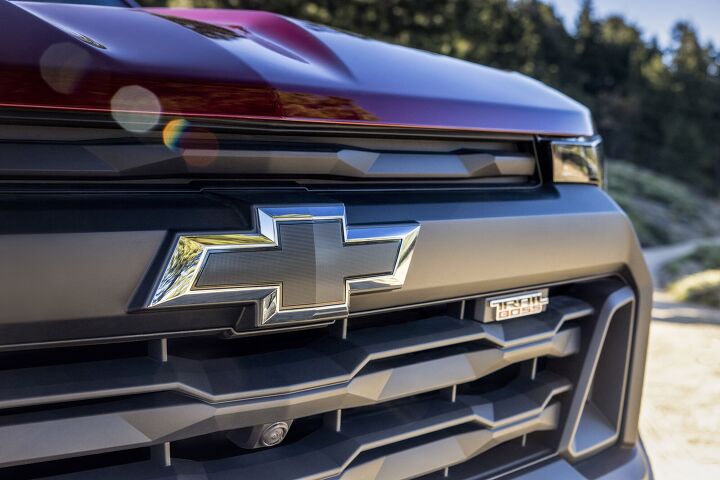

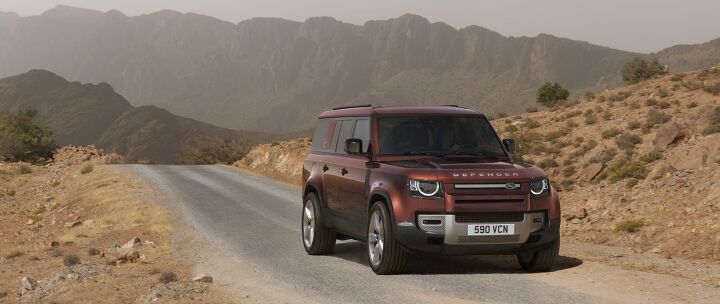



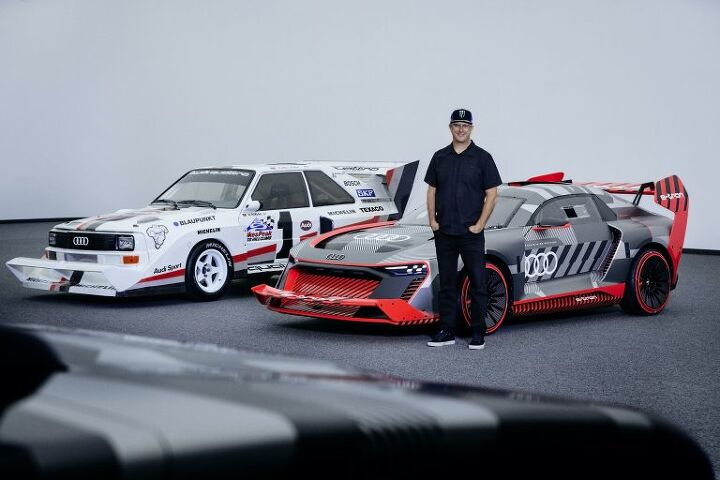
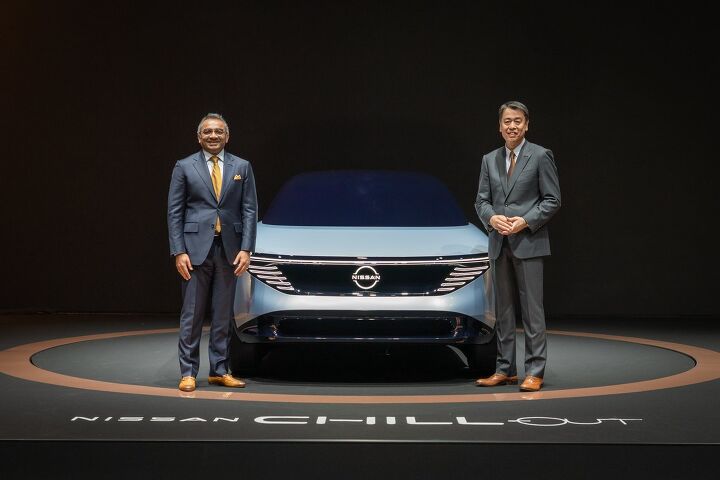

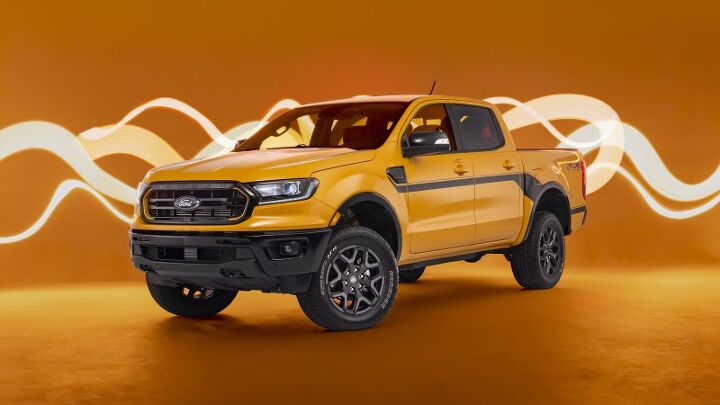
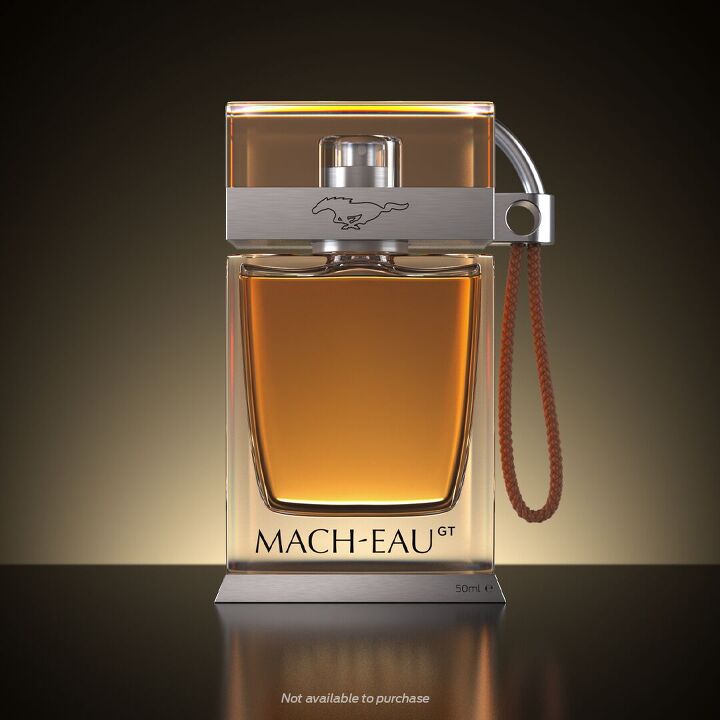

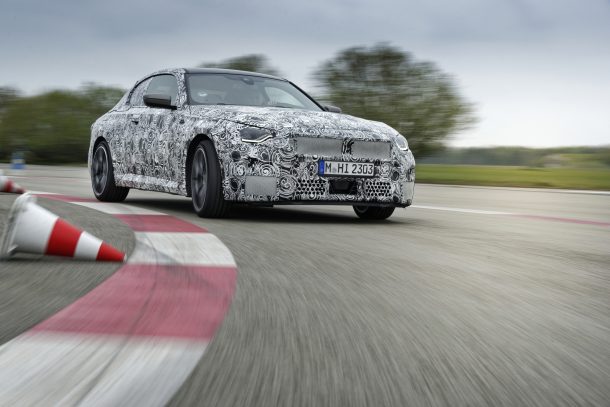
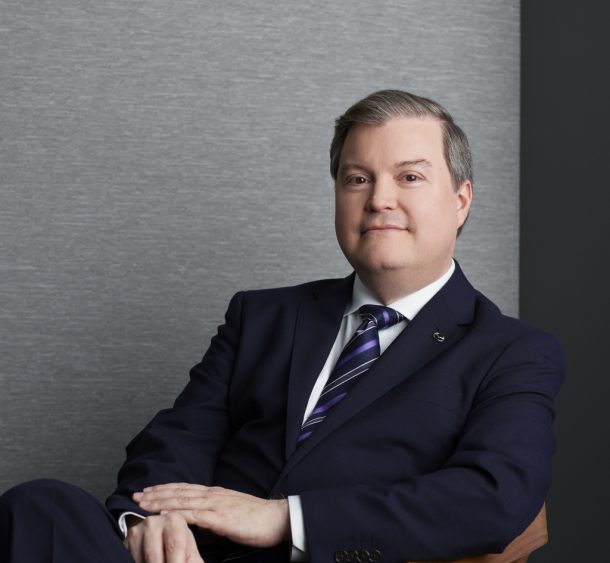

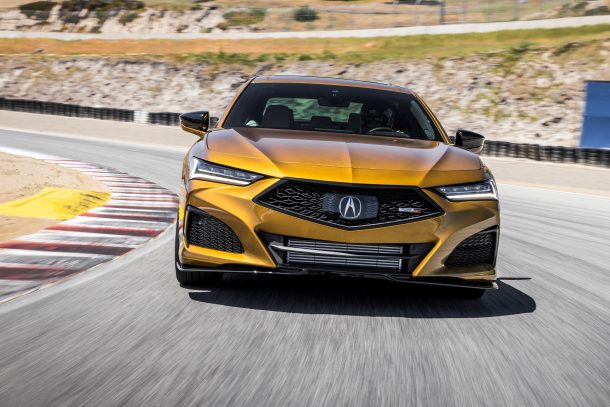



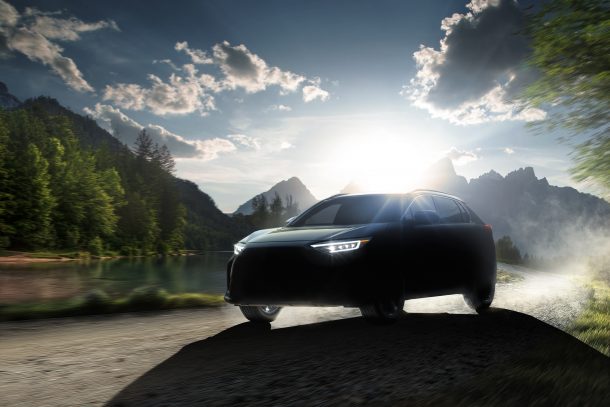

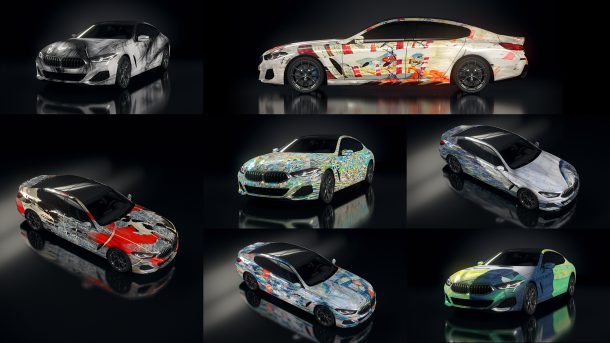

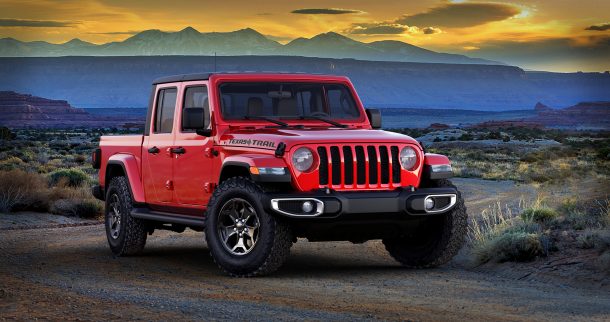
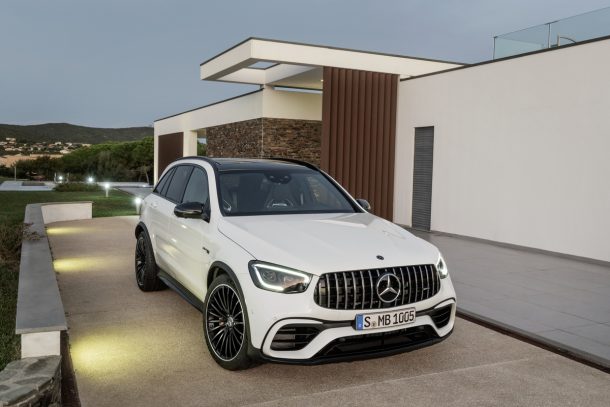

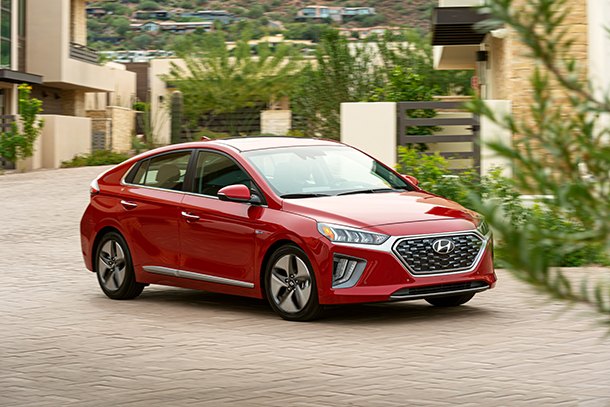
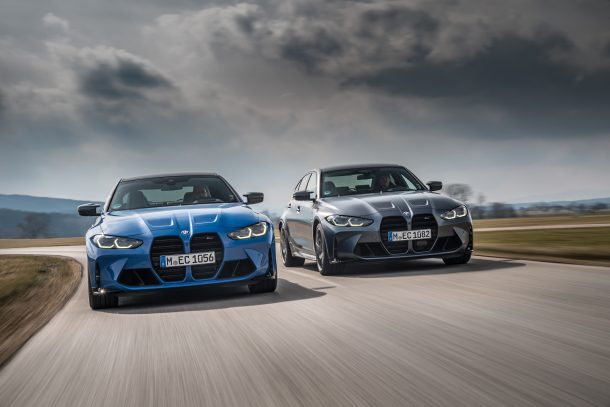
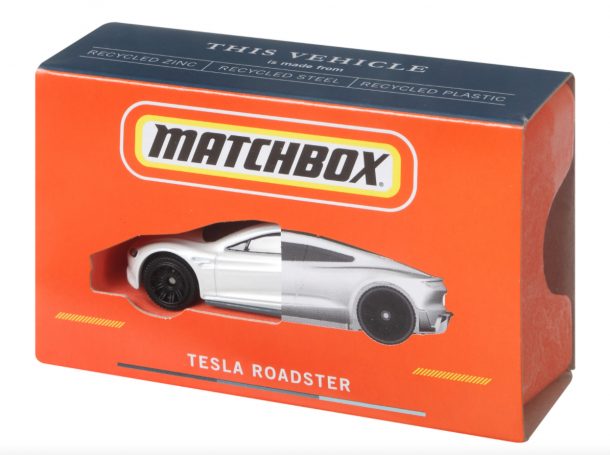
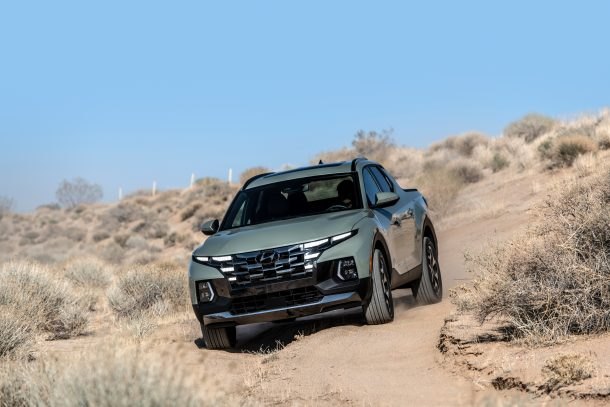
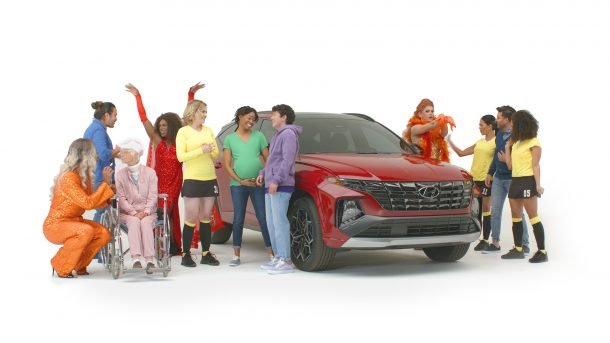

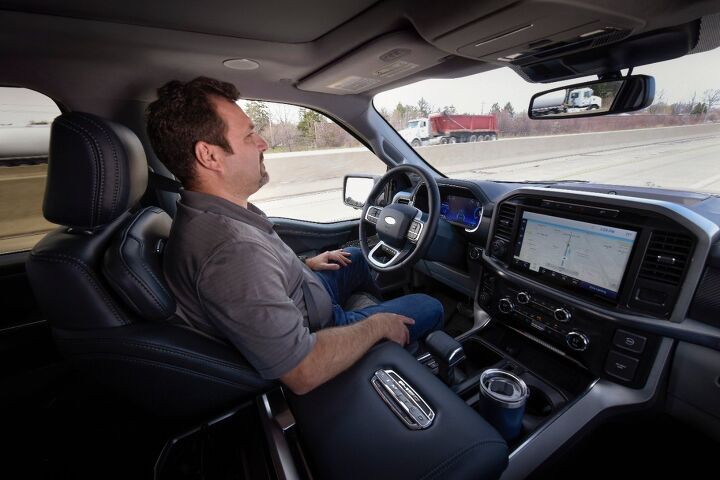
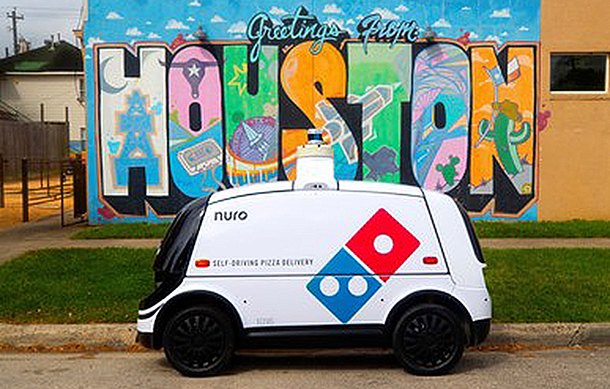
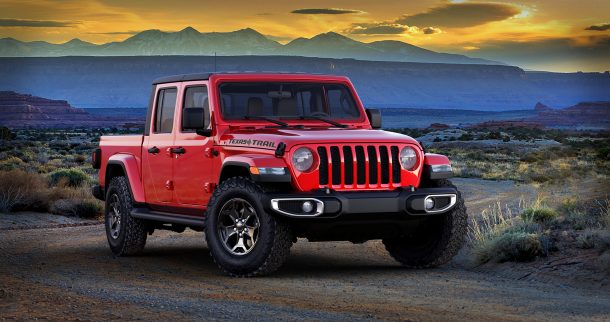

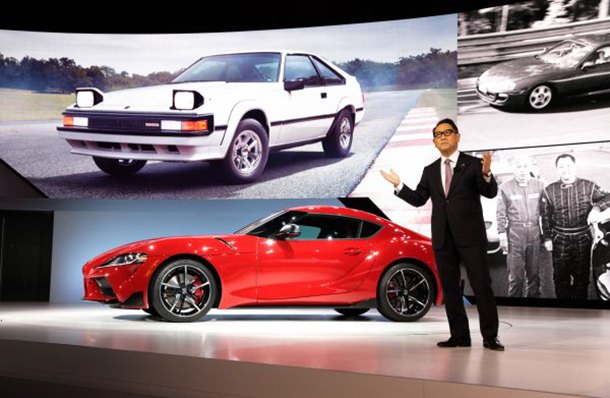
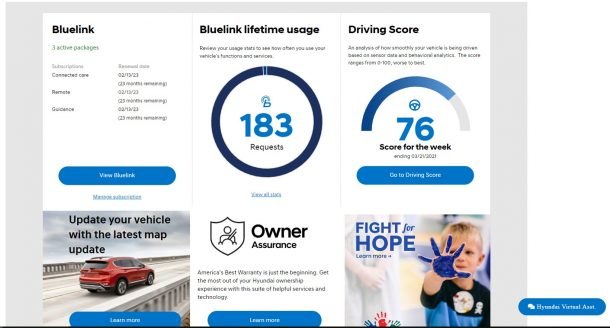


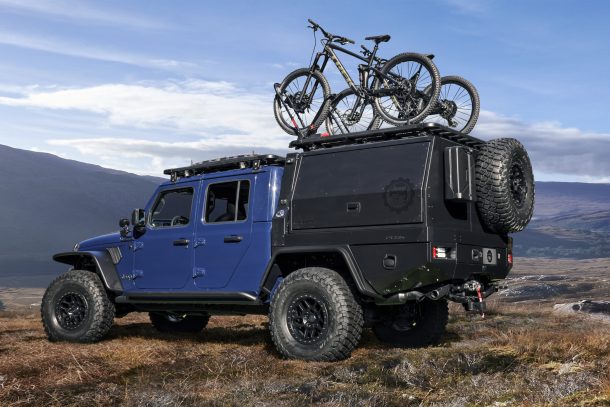
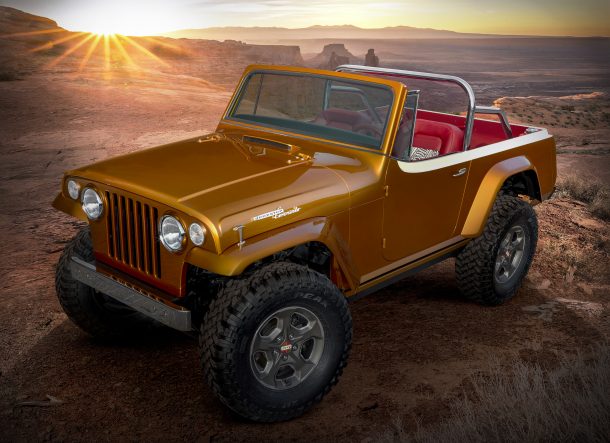
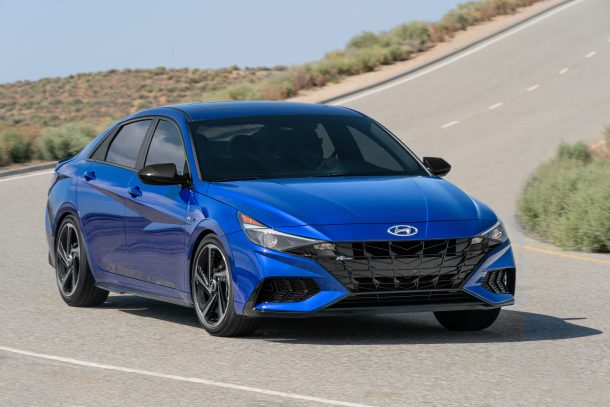
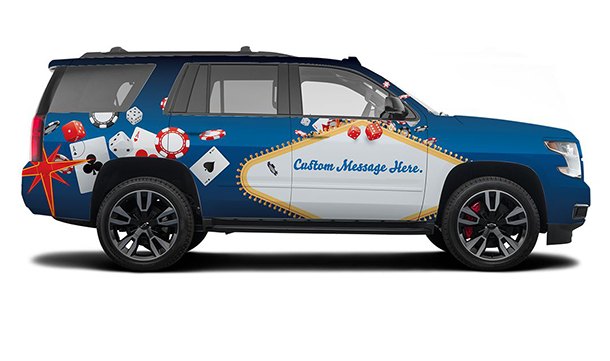
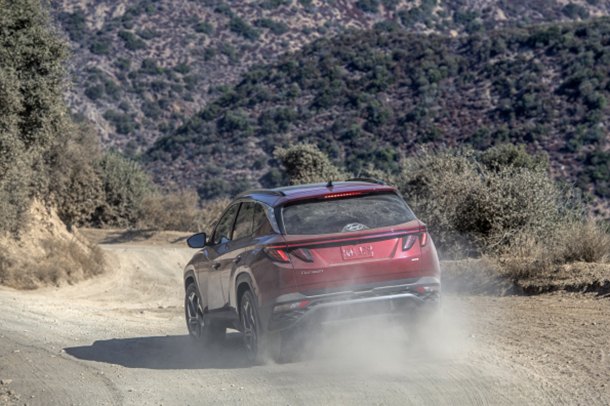

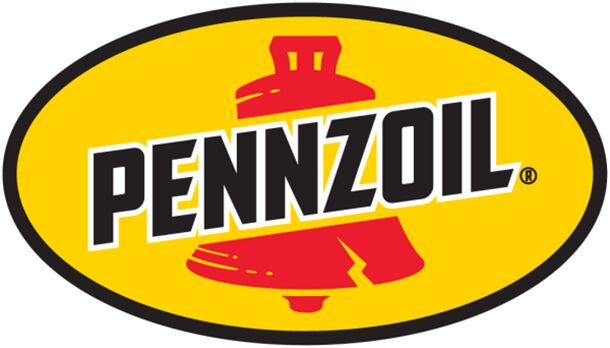


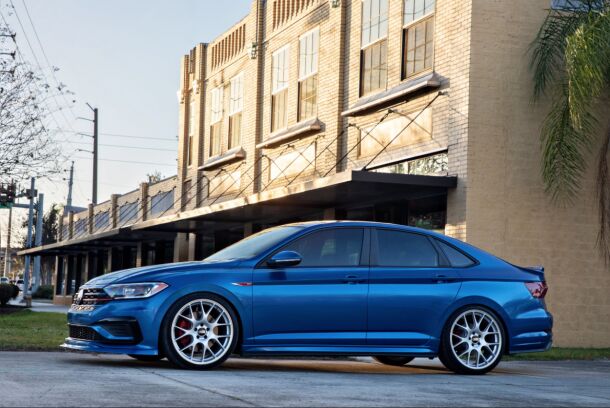
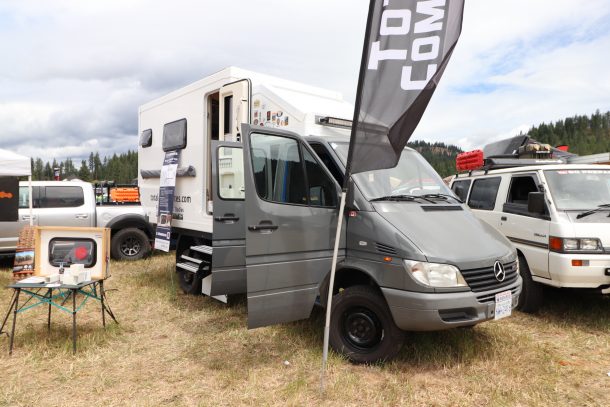
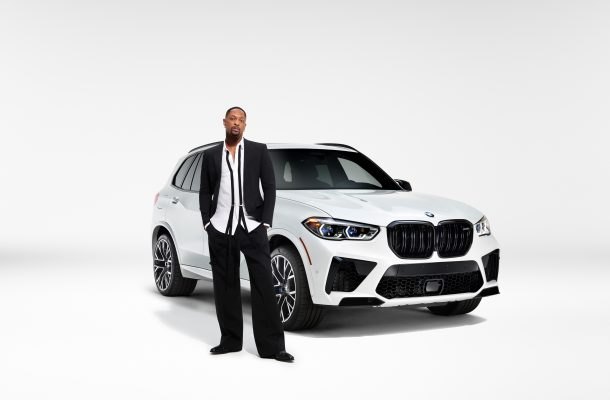


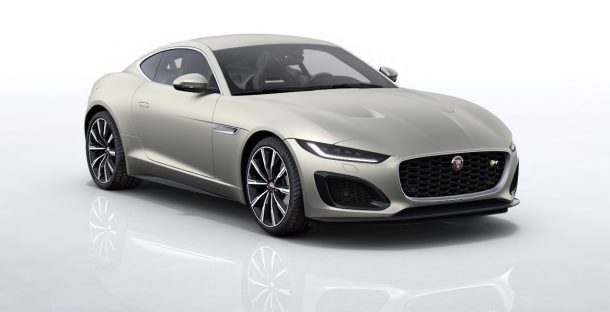


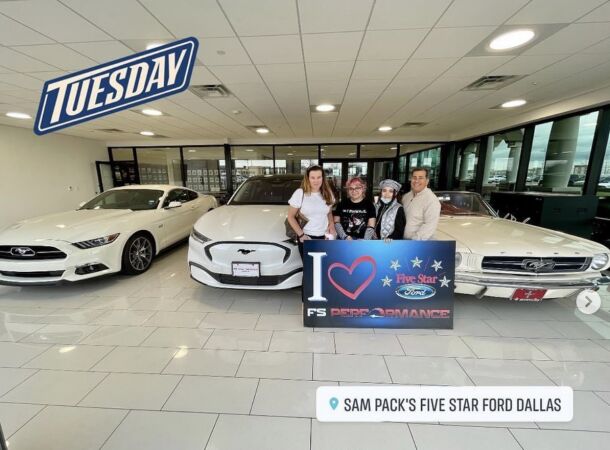

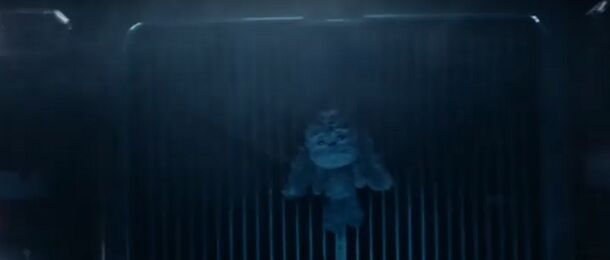












Recent Comments